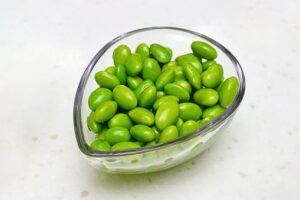The crushing sector dominates and controls the global soybean market, where soy meal, soy oil, and other products are extracted. High soybean output is encouraged by the demand for high-quality protein and nutritious qualities. The expanding markets for adhesives, pesticides, candles, printing inks, waxes, plastic, etc., are some of the elements influencing the soybean market. The spread of urbanization and the rise of the middle class contribute to the soybean market’s growth.
Given that soy is one of the primary food sources for human and animal nutrition, soybeans are a plant that is becoming more and more significant for agriculture. The use of soybeans depends heavily on the physical and chemical characteristics of the bean.
Southeast Asia
Southeast Asia is among the continents having the highest global soy use, consuming a significant amount of soybean each year, primarily in traditional soy foods and beverages, accounting for approximately 25% of the global soy food market. This region will continue to contribute to the global compounded growth rate of 5-6% soy foods to reach a market size of $55.6 billion in 2025 because of developments and trends towards the development of plant-based foods.
Products made from fermented soy typically originate from Chinese or Japanese culture. Different fermented soy cuisines are widely consumed throughout Asia, notably in the northern provinces of India. Tempeh is the fermented food that is most commonly consumed. Since the 1600s, especially in Javanese civilization, tempeh has been a unique product of Indonesian culture. Initially, black soybeans were used to make tempeh in Indonesia, and hibiscus leaf inoculum was used to start the fermentation process.
India
About 1.3 million metric tons of soybeans are used in India for soy flour and other food products. Demand for plant protein nutrients, particularly soybeans, is rising. Recently, soy food processing has become a great choice in the food processing industry, producing a lot of jobs on a small, medium, and big scale and giving the Indian population affordable nourishment. The majority of people in India are vegetarians. Both amount and quality of protein are deficient in their diet.
Most non-vegetarians do not regularly consume more animal products to meet the required protein intake. The best nutritional choice and most affordable source of protein in the nation is soy.
European Union
Approximately one-fifth of the soybeans (beans, meal, and oil) exported from South America are imported into the EU. The vast majority is used to feed animals for meat, milk, and egg production. For instance, significantly more soybean is required to make a kilogram of soy meat or tofu than it is to produce the standard kilogram of pork in the EU. Nearly one-third of the protein fed to animals in the EU comes from imported soybeans, even after rough feeds (such as grass and silages) are taken into account.
It is feasible to calculate the amount of meat, milk, and eggs that could be produced in the EU livestock sector without the import of soybeans, provided that the use of cropland in the EU for the production of animal feed does not rise.
This is important to avoid pushing the production of food crops outside the EU’s borders, which could have adverse environmental effects.
United States

More Americans than ever before are consuming soy products. Besides being rich in protein and micronutrients, soy has no cholesterol. Tofu, special soy hot dogs or hamburgers, soymilk, and edamame, soybeans, are all foods Americans eat that contain soy. Edamame is widely available at grocery stores, quick-service restaurants, and convenience stores. These beans make a delicious and nutritious snack. Vegetarians frequently use soy as a pleasant and healthy meat alternative.
This includes tempeh, produced from whole soybeans, and tofu, created from soymilk. Shoyu, the more appropriate name for soy sauce, is used to add flavor both during and after cooking. Americans occasionally consume soy without even realizing it. Our favorite foods, like ice cream, candies, and energy bars, are frequently thickened or given a protein boost using oils and fats derived from soy.
Brazil
Brazil’s soybean farming has increased due to the expanding market and demand. Because it serves as the primary feedstock for biodiesel creation, soybean oil has consistently increased demand in the industrial sector over the past ten years.
Brazil’s recent agricultural boom has been driven by soybean, which has tremendously impacted the economy and society. Soybean-growing municipalities have higher Human Development Indexes than non-soybean-growing municipalities. Brazil currently ranks second among the largest producers in the world but is predicted to overtake them in the next ten years. Brazil must use its existing resources to advance, including its access to arable land, technological prowess for production in tropical environments, and its innovative farmers. How much Brazilian soybean production will increase over the next few years will depend on global demand and market prices.
Bottomline
Leguminous plants like the soybean (Glycine max) are indigenous to northern China. For use as food, soybean has been grown for more than 5,000 years. It was introduced more recently, in the 19th century and over the previous 150 years, and has flourished in many of the world’s other continents, notably in the United States, Brazil, and Argentina, with smaller output in other Asian nations and some regions of Europe. The soybean plant is sensitive to photoperiod (day duration) and temperature.
Varieties cultivated in their best-adapted regions will have the best agronomic features and production potential. Modern agricultural technology has improved farming methods and management, allowing for the creation of soybean varieties with various features and applications.
